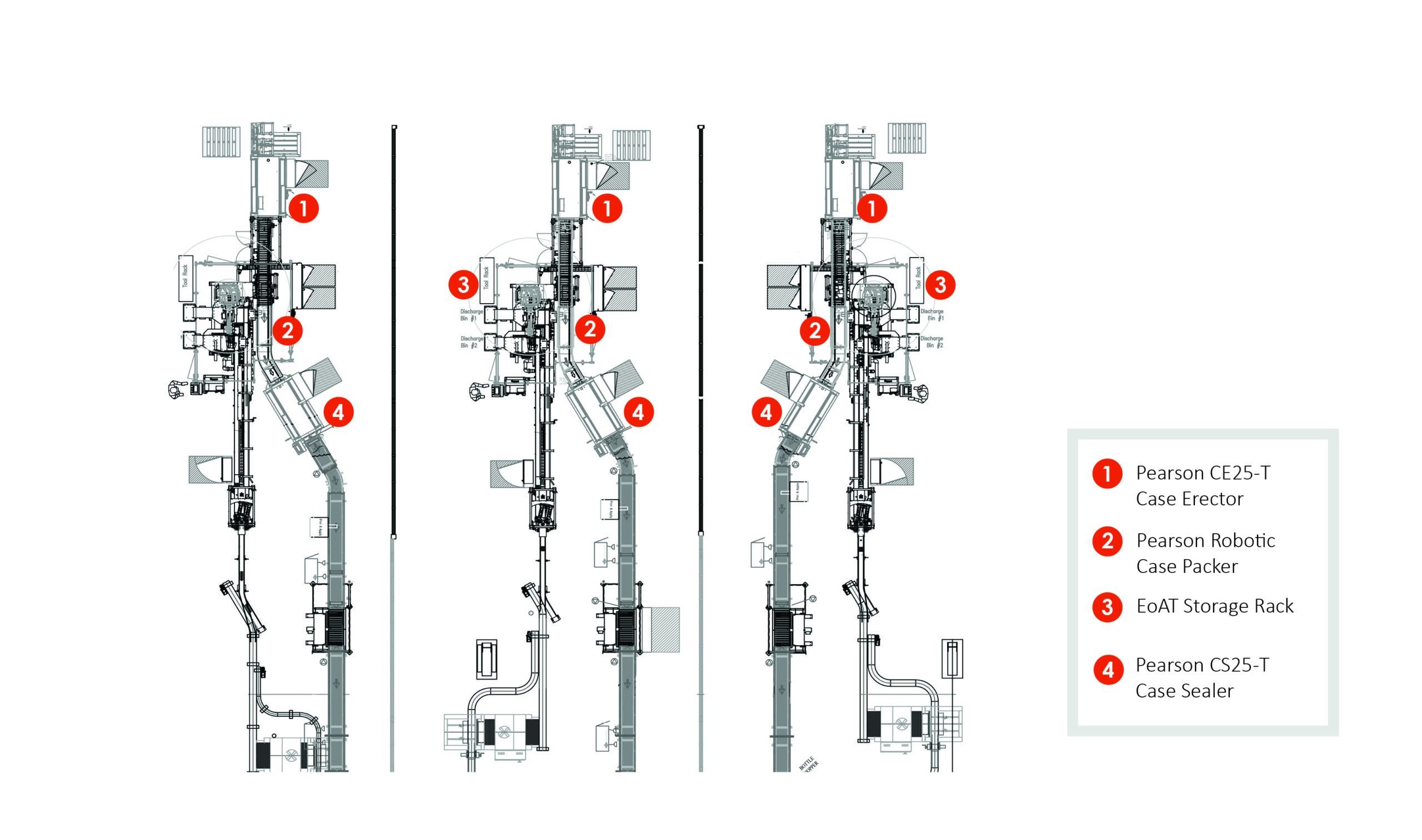A Pearson CE25-T Case Erector uses a vertical magazine pickoff and opposing vacuum to erect knockdown RSCs (regular slotted containers). The minor and major flaps are closed and tape is applied to the bottom of the case as it moves in the machine. The erected cases are discharged upright and conveyed to the robotic packer.
At the packer, loose bottles are received standing up in a single row, while packs/cartons enter narrow side leading. A servo diverter seperates products evenly onto two infeed conveyors. Product rows are conveyed into the load position and side referenced onto a dead plate one at a time. Once the correct number of rows have been accumulated and referenced, a clamp compresses the pattern down.
Simultaneously, cases are conveyed into the cell either one at a time or in sets of two. Next, they advance into the load position where flap control plates engage to secure the case flaps during the loading process. A FANUC M-710iC robot picks and places the entire product pattern from the infeed conveyor into the cases. If a product formation is incomplete, the robot picks the product group and releases it into a project reject station for quality control. The case loading process repeats, alternating between the two pattern forming infeed positions as needed.
Once complete, the cases are released to the takeaway conveyor and route to the CS25-T Case Sealer. The top minor and major case flaps are folded and tape is applied to the top of the box as it is conveyed through the machine.



